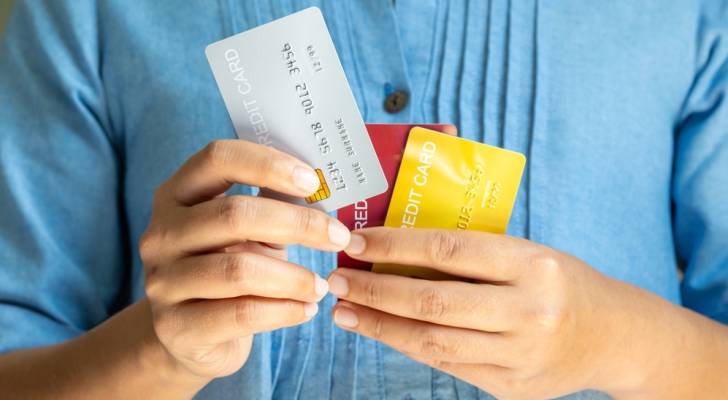
Credit card welcome offers are powerful incentives used by issuers to attract new customers. These offers — often referred to as welcome bonuses or new cardholder perks — can include everything from elevated cashback rates and travel rewards points to waived annual fees and exclusive access to premium experiences. But how do these offers work, and how can you make the most of them?
What are welcome offers and how do they work?
At their core, welcome offers are bonuses designed to entice you to apply for a specific credit card. For cashback cards, the promotion may temporarily boost the rate at which you earn rewards. Travel cards may award you a lump sum of points, airport lounge passes or even companion flight vouchers. Most promotions also waive the annual fee for the first year — an added incentive for prospective cardholders.
While some offers are awarded automatically, the most lucrative deals often come with conditions. You may need to spend a certain amount within the first few months or make a qualifying purchase. Some promotions are capped, offering the bonus only up to a spending limit, and many are available for a limited time.
Notably, these time-sensitive promotions don’t always get extended. A prime example occurred in 2017, when TD Bank ended its Aeroplan card promotion due to shifting partnerships. If you come across a compelling offer, don’t wait too long. Act quickly before it disappears.
Though the term “sign-up bonus” is sometimes used, it can be misleading. Rarely do you receive the bonus for simply signing up. Most often, it’s contingent on meeting a spending threshold shortly after receiving the card. That’s why terms like “welcome offer” or “new cardholder bonus” are now more widely used.
Real-world example: CIBC Cashback welcome offer
To understand the real value of a welcome bonus, consider the CIBC Cashback credit card:
- Offer: 10% cashback on all purchases for the first four months (up to $2,500 in spending)
- Annual fee: $120, waived for the first year
- Post-promo rates: 4% on gas/groceries, 2% on dining/transit, 1% on all other purchases
The breakdown:
- Enhanced cashback: $2,500 × 10% = $250
- Annual fee waived: $120
- Total first-year value: $370
Compare this to the standard reward:
- $1,500 in groceries × 4% = $60
- $1,000 in other spending × 1% = $10
- Standard cashback: $70
Conclusion: The welcome offer provides a 428% increase in value over regular spending. For those spending at least $625/month, this is effectively $420 in your pocket — free money with minimal effort.
The information for the CIBC Card has been collected independently by Money.ca. The card details on this page have not been reviewed or provided by the card issuer.
Any opinions, analyses, reviews, or recommendations expressed on this page are those of the author’s alone, and have not been reviewed, approved or otherwise endorsed by our advertising partners.
Types of credit card welcome offers in Canada
Not all promotions are created equal. Here’s how to evaluate them:
Cashback
Cash back cards offer money back on purchases, typically with a promotional rate on specific categories for a limited time.
Look for:
- Elevated cashback rates (up to 10%)
- Waived annual fees
- Bonus statement credits
✈️ Travel and rewards
Travel credit cards reward spending with points that can be redeemed for flights, hotels and more. Bonuses typically require meeting a spending milestone.
Top features:
- Bulk travel/rewards points
- Bonus points with partner purchases
- Fee waivers and companion travel vouchers
📉 Balance transfer
Balance transfer cards are deal for debt management, these cards offer low or 0% interest on transferred balances for a fixed time.
Watch for:
- Introductory 0% interest for 12 to 24 months
- Low or no balance transfer fees
- Promotional low rates on new purchases
💎 Premium cards
With higher fees come luxury perks, but ensure the card’s long-term value justifies its cost after the promo ends.
Perks include:
- High-value point bonuses
- Companion vouchers and travel credits
- Waived first-year fee
- Elite benefits (insurance, lounge access, etc.)
Why do credit card issuers offer sign-up bonuses?
Credit card companies use welcome offers to stand out in a competitive market. While premium cards typically offer the most generous bonuses, savvy consumers can also find excellent value among no-fee or mid-tier cards.
Many Canadians leverage these offers to maximize rewards; some even engage in "churning," where they switch cards frequently to take advantage of multiple sign-up bonuses. This can be rewarding, but comes with risks: Frequent applications may affect your credit score, and annual fees or high-interest rates can eat into your gains if not managed wisely.
Evaluating the fine print after the promo ends
Before committing to a card, consider these key post-promo terms:
- APR (Annual Percentage Rate): Lower is better if you carry a balance.
- Cash advance APR: Often higher than standard APR, sometimes applies immediately.
- Grace period: Time before interest accrues — critical if you occasionally pay late.
- Annual fee: Understand whether the perks justify the long-term cost.
Your goal should be to choose a card that fits your needs both during and after the promotional period.
Getting the best offer
Canadian issuers frequently update or discontinue welcome offers. If you see a compelling promotion, act. You can always switch later if a better deal emerges. Reddit forums and financial communities are full of Canadians who’ve used these bonuses to fund vacations, build rewards balances and save on interest. Just remember: Your credit health comes first.
This article provides information only and should not be construed as advice. It is provided without warranty of any kind.